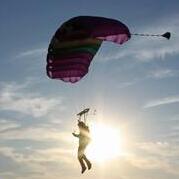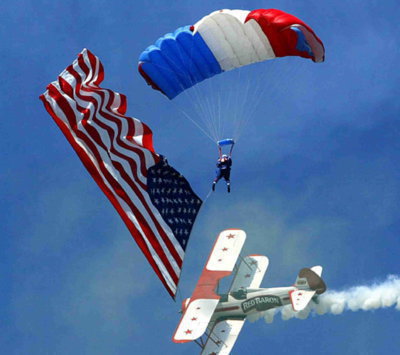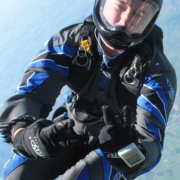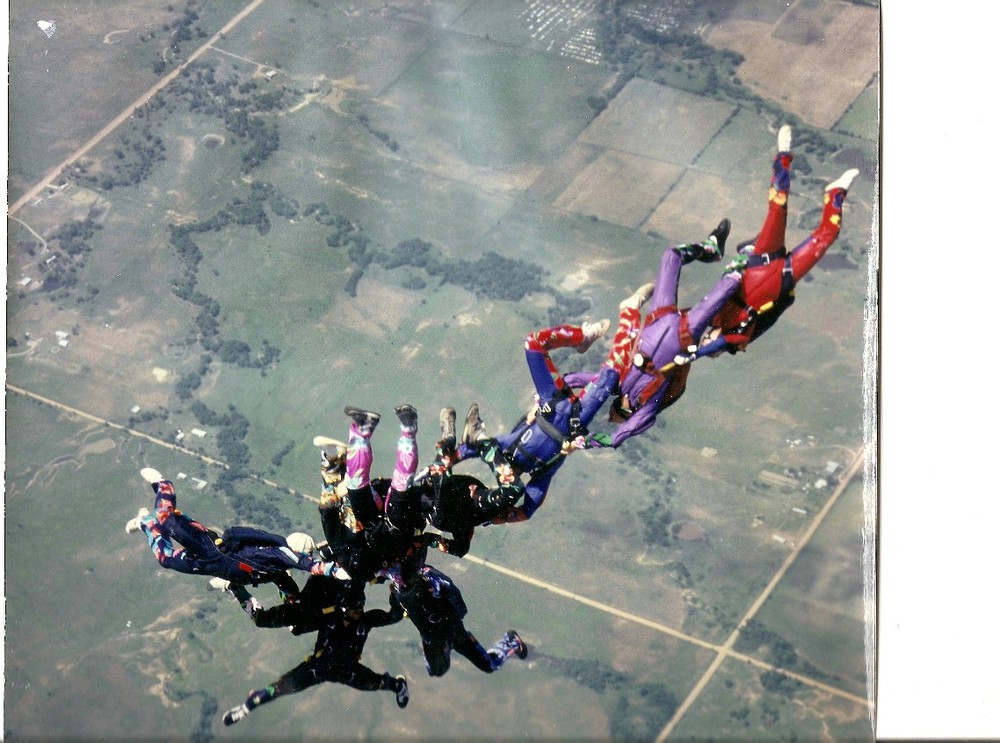Recommended Posts
Broke 0
http://www.straightdope.com/columns/060203.html
Anvil Brother 84
SCR 14192
Quote>I'm thinking of it like a car on a dynamometer machine . . .
Here's the equivalent scenario:
You put a car on a dynamometer with the transmission in neutral; no other attachement to the dynamometer other than the wheels resting on the rollers. The dynamometer has a control system that tracks the car's speed and tunes the speed of the dynamometer to be exactly the same (but in the opposite direction). Then you hook a cable up from the front bumper of the car, and attach the cable to a diesel tractor.
Now you start the diesel tractor and start pulling. What happens?
Ah ha, that's the problem with your reasoning. A plane's thrust does not come from the wheels like a car does. With the scenario you presented no, the car would not move anywhere, however, that is not the case with an airplane.
Douva 0
Those supporting the flight theory seem to believe "tunes the speed of the conveyor to be exactly the same" means the conveyor moves backward at the same speed the plane is moving forward (i.e., If the plane is creeping forward at four knots, the conveyor is moving backward at four knots.) Because the wheels spin free and do not affect the forward thrust of the plane, the wheels would simply spin faster than four knots to compensate, and the plane would steadily accelerate to takeoff speed. Under this interpretation, I believe those people supporting flight are correct.
Those supporting the no flight theory seem to believe "tunes the speed of the conveyor to be exactly the same" means the conveyor moves backward at a neutralizing speed, or the speed of the rotating tires. I doubt anyone here believes that a plane with its engines shut off would sit in place on the conveyor, as the wheels spun free, so everyone has to acknowledge that increased thrust is necessary to compensate the countermoving ground. Therefore, if the tuner were matching the wheel speed, rather than the forward speed of the airplane, any amount of thrust would be countered by the reverse drag on the tires, making takeoff impossible. Under this interpretation, I believe the people supporting no flight are correct.
However, the question says the conveyor "tracks the plane's speed," not the tire speed, so I believe the first interpretation is correct.
Broke 0
Anvil Brother 84
SCR 14192
JohnRich 4
QuoteNothing in that description says that the conveyor can counteract the movement of the plane to keep it stationary relative to the ground.
That is exactly how I interpret: "tracks the plane's speed and tunes the speed of the conveyor to be exactly the same (but in the opposite direction)."
billvon:
QuoteYou put a car on a dynamometer... Then you hook a cable up from the front bumper of the car, and attach the cable to a diesel tractor. Now you start the diesel tractor and start pulling. What happens?
The insurance adjuster is going to be really pissed off.
Douva:
QuoteThose supporting the flight theory seem to believe "tunes the speed of the conveyor to be exactly the same" means the conveyor moves backward at the same speed the plane is moving forward (i.e., If the plane is creeping forward at four knots, the conveyor is moving backward at four knots.) Because the wheels spin free and do not affect the forward thrust of the plane, the wheels would simply spin faster than four knots to compensate, and the plane would steadily accelerate to takeoff speed.
Okay, I've finally "got it". Thank you, Douva, for posting a good explanation of what others are saying here. I can now see how flight would be possible, even though the plane is "stationary" relative to the ground.
And once the plane reaches liftoff "speed" and breaks free from tire traction on the treadmill, I guess it would shoot off into the air like it was fired from a aircraft carrier's steam catapault?
sundevil777 102
QuoteQuoteNothing in that description says that the conveyor can counteract the movement of the plane to keep it stationary relative to the ground.
That is exactly how I interpret: "tracks the plane's speed and tunes the speed of the conveyor to be exactly the same (but in the opposite direction)."
The conveyor speed does not have to match the speed of the airplane. The airplane has wheels that can roll, so the plane can move relative to the ground independently of the conveyor, especially since it has a prop for thrust that is independent of the conveyor.
There is nothing that prevents the engine from propelling the aircraft forward through the air. The wheels and conveyor have nothing to do with it except relative to each other. The conveyor will have to be as long (distance-wise) as it takes the plane to gain needed airspeed to leave the conveyor...otherwise, the plane drives off the end of it.
The earth is spinning faster than your jump plane is moving through the air yet it still takes off...it doesn't matter which direction you use...go figure.
I think we're all Bozos on this bus.
Falcon5232, SCS8170, SCSA353, POPS9398, DS239
QuoteThen you hook a cable up from the front bumper of the car, and attach the cable to a diesel tractor.
Now you start the diesel tractor and start pulling. What happens?
WOO-FUCKING-HOO!!!! Holy shit, it's a new, more economical tractor, made for small jobs like pulling cars!
Blues,
Dave
(drink Mountain Dew)
jakee 1,583
QuoteOkay, I've finally "got it". Thank you, Douva, for posting a good explanation of what others are saying here. I can now see how flight would be possible, even though the plane is "stationary" relative to the ground.
No, that isn't what Douva is saying. Lets try another analogy.
Y'know those conveyor belts they have in big airports so people don't have to walk along the corridors? You are walking at 5 mph on solid ground next to the conveyor belt, and you are pushing a bicycle. The conveyor belt is going backwards at 5 mph, the wheels of the bicycle are on the conveyor belt.
I'll repeat, you are on the non-moving floor, the bike is on the belt. The speed of the conveyor is exactly the same as your speed, but in the opposite direction. It is pretty damn obvious that you will have no problems pushing your bike along the corridor, the wheels will simply be turning at 10mph instead of 5.
Now imagine the bike is the plane, and you are its engine.
QuoteOkay, I've finally "got it". Thank you, Douva, for posting a good explanation of what others are saying here. I can now see how flight would be possible, even though the plane is "stationary" relative to the ground.
And once the plane reaches liftoff "speed" and breaks free from tire traction on the treadmill, I guess it would shoot off into the air like it was fired from a aircraft carrier's steam catapault?
No, you don't yet "get it." Perhaps it'll be easier to imagine in reverse. Let's say an airplane is on final approach to land on such a conveyor belt. The belt has a radar system attached to it so that it "knows" the exact groundspeed of the approaching aircraft. When the plane touches down, do you think it will come to a catastrophic stop? Or will the wheels simply spin faster than they do when touching down on a runway?
It would take a wind-generator tuned to the airspeed being generated by the props to cause the type of launch you're talking about. The only way a conveyor belt could affect the launch is by going the same direction as the airplane is pointed...e.g. set the brakes on the wheels, and let the belt convey the aircraft across the ground (more accurately, through the airmass) at whatever its minimum take-off speed is.
Blues,
Dave
(drink Mountain Dew)
But thanks for playing.
JohnRich 4
QuoteLets try another analogy. Y'know those conveyor belts they have in big airports...
Bingo! (Light bulb going off)
Thanks for that explanation.
But I contend that the initial description is highly misleading, allowing misinterpretation of what is really intended to be said. I blame the tech-writer!
QuoteQuoteLets try another analogy. Y'know those conveyor belts they have in big airports...
Bingo! (Light bulb going off)
Thanks for that explanation.
But I contend that the initial description is highly misleading, allowing misinterpretation of what is really intended to be said. I blame the tech-writer!
***
I asked my wife the question...who is a expert on EVERYTHING!
The definitive answer to this question / riddle is:
Go cut the grass!
~ If you choke a Smurf, what color does it turn? ~
Ashtanga 0
Has anyone else driven down the highway and pulled back on the steering wheel wishing you could fly your car?
Douva 0
QuoteThose supporting the flight theory seem to believe "tunes the speed of the conveyor to be exactly the same" means the conveyor moves backward at the same speed the plane is moving forward (i.e., If the plane is creeping forward at four knots, the conveyor is moving backward at four knots.) Because the wheels spin free and do not affect the forward thrust of the plane, the wheels would simply spin faster than four knots to compensate, and the plane would steadily accelerate to takeoff speed.
Basically, if the plane were accelerating forward at 60 knots and the conveyor was moving backward at 60 knots, the wheels would simply spin at 120 knots to allow the plane to continue accelerating forward.
So here's my next question: If the conveyor were set to move in the opposite direction of the plane, at TWICE the forward speed of the plane, would it neutralize the movement of the plane?
Edited to add my theory:
As I said before, imagine a plane with no engines sitting on the conveyor. If the conveyor started moving, the plane would move backward with it. That's because the wheels do have some resistance to turning. That resistance has to be overcome by the thrust of the plane's engines, in order to hold the plane neutral. Even more thrust is required to move the plane forward. If the conveyor were turning at twice the forward speed of the plane (the speed the plane would be moving forward on stationary ground), it would be matching the wheel speed required to move the plane forward, and the plane would remain neutral. That's my theory, anyway.
Fast 0
QuoteQuoteThose supporting the flight theory seem to believe "tunes the speed of the conveyor to be exactly the same" means the conveyor moves backward at the same speed the plane is moving forward (i.e., If the plane is creeping forward at four knots, the conveyor is moving backward at four knots.) Because the wheels spin free and do not affect the forward thrust of the plane, the wheels would simply spin faster than four knots to compensate, and the plane would steadily accelerate to takeoff speed.
Basically, if the plane were accelerating forward at 60 knots and the conveyor was moving backward at 60 knots, the wheels would simply spin at 120 knots to allow the plane to continue accelerating forward.
So here's my next question: If the conveyor were set to move in the opposite direction of the plane, at TWICE the forward speed of the plane, would it neutralize the movement of the plane?
Edited to add my theory:
As I said before, imagine a plane with no engines sitting on the conveyor. If the conveyor started moving, the plane would move backward with it. That's because the wheels do have some resistance to turning. That resistance has to be overcome by the thrust of the plane's engines, in order to hold the plane neutral. Even more thrust is required to move the plane forward. If the conveyor were turning at twice the forward speed of the plane (the speed the plane would be moving forward on stationary ground), it would be matching the wheel speed required to move the plane forward, and the plane would remain neutral. That's my theory, anyway.
The only way that the plane would fail to take off is if the wheels blew up -or- if the drag factor in the wheels was greater than the force generated by the plane's engine.
What exactly the speed of the conveyor is doesn't matter. It has to overcome the thrust power of the plane against the air via friction in the wheels.
One suposition that you could make was, given a plane with indestructable wheels and an indestructable conveyer, if it spun fast enough the plane wouldn't have enough thrust against the air to take off. The formula for how fast that would be requires me to do physics that I don't remember anymore. It would also have to do with, can the conveyer accelerate fast enough to get to speed before the plane takes off.
But seriously, lets just use a helicopter and avoid this question from now till the end of time.
Where troubles melt like lemon drops Away above the chimney tops That's where you'll find me.
Swooping is taking one last poke at the bear before escaping it's cave - davelepka
jonstark 8
jon
QuoteYes, it will take off, with the wheels of the plane rotating faster than normal. The conveyor cannot, and is not defined as being able to keep the plane stationary relative to the ground, so the only result is the wheels rotating faster.
http://www.dropzone.com/cgi-bin/forum/gforum.cgi?post=2006172#2006172
stitch 0
"I don't think I like the sound of that" ~ MB65
Don't be a "Racer Hater"









Chuck Norris doesn't need an airplane to fly silly. If you'd known that you wouldn't bv getting a roundhouse kick to the head right now!
You're not as good as you think you are. Seriously.
Share this post
Link to post
Share on other sites